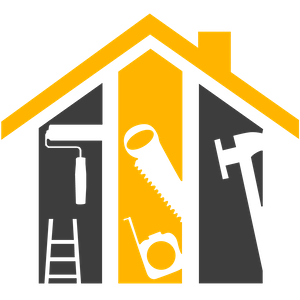Conducting a thorough home energy audit is essential for Miami residents looking to improve their energy efficiency and reduce their overall utility costs. Understanding the scope, tools, and processes involved can help homeowners and professionals alike ensure that they get the most accurate and beneficial results from their energy assessments. This guide provides a detailed look at the ins and outs of performing a home energy audit in Miami and nearby areas.
Duration and Costs of Home Energy Audits
| Duration | Cost Range | |
|---|---|---|
| Basic Audit | 1-2 hours | $100 – $250 |
| Standard Audit | 2-4 hours | $250 – $500 |
| Comprehensive Audit | 4+ hours | $500 – $1,000 |
Home energy audits can vary greatly in both duration and cost depending on the size of the home and the depth of the audit required. Basic audits are quicker and less expensive, focusing on the most obvious issues. Standard audits provide a more in-depth analysis, which takes more time but offers broader insights. Comprehensive audits, which are the most detailed, can take a full day or more and will provide a complete energy usage profile of your home, including thermal imaging tests. Costs can also vary based on the expertise of the auditor and specific regional market rates.
Materials Required for a Home Energy Audit
To ensure an efficient and smooth energy audit, certain materials are necessary:
- Checklists to ensure all areas are covered.
- Forms for recording data.
- Labels to mark areas requiring action.
These materials help in organizing the audit process and ensuring that nothing is overlooked. Checklists can be tailored to specific areas of the house, such as the attic, basement, or HVAC systems, and are essential for keeping track of findings. Forms are used to note down the details of the audit, such as measurements of insulation levels or the age of appliances. Labels are handy for marking areas that need attention, making it easier to address these issues later.
Estimating Time Based on Audit Scope
| Audit Type | Estimated Time | Coverage |
|---|---|---|
| Visual Inspection | 1-2 hours | Basic visual check of major systems |
| Blower Door Test | 2-3 hours | Measures air leakage |
| Full Diagnostic Audit | 4-6 hours | In-depth analysis of all systems |
The time required for a home energy audit in Miami will depend on the scope and depth of the audit. A visual inspection might take only a couple of hours and will cover basic visual checks of major systems. Adding a blower door test to detect air leaks will extend the audit time. A full diagnostic audit, which checks all aspects of home energy use, including HVAC systems and insulation, can take up to a day or more, especially in larger homes.
If you have a question and need help from a specialist, you can write your request:
Essential Tools for a Professional Auditor

Professional home energy auditors rely on several key tools to perform their tasks effectively:
- Blower door: To measure the air tightness of a building.
- Infrared camera: For thermal imaging to detect heat loss areas.
- Gas leak detector: To identify potential gas leaks in the home.
- Electricity usage monitor: To assess how much electricity is used by different devices.
These tools help the auditor provide a detailed assessment of a home’s energy efficiency. The blower door is essential for finding leaks that could be causing energy loss. An infrared camera allows the auditor to see areas of poor insulation. Gas leak detectors and electricity usage monitors help ensure that the home’s systems are operating safely and efficiently.
Step-by-Step Guide to Conducting Audits
- Preparation: Gather all necessary tools and materials. Prepare checklists and forms.
- Initial Walkthrough: Conduct a visual inspection of the home to identify obvious areas of inefficiency.
- Detailed Inspection: Use tools like blower doors and infrared cameras to examine the building envelope, HVAC systems, and insulation.
- Report Generation: Compile the data collected into a comprehensive report detailing findings and recommendations.
This structured approach ensures that every aspect of the home’s energy usage is evaluated and documented. Starting with preparation and an initial walkthrough allows the auditor to get an overview of potential issues that need closer inspection. The detailed inspection then addresses these areas systematically, ensuring a thorough audit.
Common Mistakes and Corrective Actions
| Common Mistakes | Corrective Actions |
|---|---|
| Overlooking minor leaks | Use a blower door to ensure all leaks are found. |
| Inadequate insulation checks | Use thermal imaging to assess insulation effectiveness. |
| Ignoring appliance efficiency | Evaluate the age and efficiency ratings of all appliances. |
| Incomplete data recording | Use checklists and forms to ensure all information is captured. |
Avoiding these common mistakes can significantly impact the effectiveness of a home energy audit. For instance, minor leaks can lead to significant energy loss over time; thus, using a blower door can help identify even the smallest leaks. Similarly, thermal imaging should be used to check insulation thoroughly, as inadequate insulation is a major cause of energy wastage. Proper evaluation of appliances and comprehensive data recording are also crucial for an effective audit.
By understanding the requirements, tools, and common pitfalls of home energy audits, Miami residents can ensure that they are getting the most accurate and useful information from their assessments, leading to better energy efficiency and cost savings.










